Matador Network's Blog, page 2131
March 11, 2015
The most confusing English words
Truths about living in Buenos Aires

Photo: Fede Salvo
1. Skyrocketing inflation and economic instability
At approximately 40%, inflation in Buenos Aires is enough to give even the healthiest person a stress-driven stroke. Rents spike, the price of food is constantly on the rise — so much so that many restaurants have stopped printing their menus and write them on chalkboards instead, considering they are forced to change prices every month.
Given the economy’s volatility — Argentina just defaulted on its debt this past summer — many Buenos Aires residents, both Argentines and expats, put their stock in the dollar, hoarding the foreign currency and exchanging it at the “blue” rate. Yes, Argentina has two different exchange rates. The peso’s constant devaluation makes it basically impossible to save, so unless you find a way of procuring dollars, which, let’s face it, just feeds into the country’s economic mess, you can kiss long term plans and travel goodbye.
2. Rampant crime
If you haven’t been robbed in Buenos Aires, count your lucky stars and knock on wood. Better knock a few times, for good measure. Petty crime abounds in the Argentine capital, from pickpocketing in the crowded subte (metro) to muggings at bus stops. Thieves on motorcycles have been known to speed by and snatch iPhones out of unsuspecting tourists’ hands while they are in a taxi with an open back window. Locals quickly learn to exercise basic precaution, such as storing cash in shoes, bras, and other less accessible parts on their person or driving through red lights at night in order to avoid car jackings.
A 2014 OSAC report classifies crime in Buenos Aires as a “serious problem” and warns against armed robberies as well as schemes such as “mustard on the back,” in which a seemingly helpful person offers to help you clean off mustard that’s magically appeared on you while an accomplice snatches your bag in the few seconds you are distracted. I hardly know what’s worse: the anger you feel at having been robbed, or the overwhelming stupidity you feel for not having seen it coming. A one-time victim of this stratagem, I’m still working on that one.
3. Poverty
Following the 2001 economic collapse, many Argentines were forced to abandon their homes and relocate to villas (slums) dotted around and throughout the city, often right next to some of the capital’s wealthiest neighborhoods. Over the years, these villa populations have only increased — and dramatically so. According to a 2010 census, Rodrigo Bueno villa’s population increased from 350 residents in 2001 to 1,800. And today, there are more than 10,000 villas within Buenos Aires Province and 56 within the capital, harboring approximately 325.837 and 73.325 families, respectively, Argentine nonprofit TECHO claims. According to Index Mundi, that’s 30% of Argentines living below the poverty line.
Poverty may be most visible in the villas, but it’s by no means contained there. Riding the subte, one becomes all too accustomed to seeing children robotically hand out trinkets — hair pins, religious cards — to metro riders, asking for a few pesos in exchange. Homeless men nap beneath doorways of posh edifices in Recoleta, one of the city’s wealthiest neighborhoods.
4. Lack of transparency and corruption
As the Nisman affair unfolds, one thing becomes all too apparent: an overwhelming lack of transparency and public accountability within government permeates Argentine politics. Biased media and coverups make it almost impossible to sift fact from fiction.
Transparency International awards Argentina 34 out of 100 (0 representing high corruption and 100 representing clean) for its corruption-perceptions index and claims that 77% of Argentines believe their government’s effort to fight corruption are ineffective. In a 2013 survey, the organization called Argentina and Mexico the most corrupt countries in Latin America.
5. Racism and cultural insensitivity
Porteña society, with its roots largely in Italy, Spain, and other Western European countries, is fairly homogenous. As an expat, if you fit that European-descended mold, chances are you’ll fit right in (superficially, at least). If you hail from more “exotic” climes, however, expect to receive some unwanted attention. I’ve frequently heard black acquaintances — of both African and North American origin — complain of porteños’ lack of awareness and insensitivity when making reference to their cultural backgrounds.
Terrible stereotypes about immigrants from the North — Peru and Bolivia, primarily — also proliferate. “Bolivians are dirty” and “Peruvians don’t work” are comments so commonly dished out you’d think they were empirical assessments regarding avocado prices. 
Ways you're killing the environment

Photo: danielfoster437
YOU KNOW an invention has its drawbacks when even the guy who invented it says he’s sorry he did so.
That would be John Sylvan, inventor of the easy-to-use Keurig coffee maker — an invention deemed “the most wasteful form of coffee” on the planet.
Sylan says he regrets the creation largely due to its severe ecological impact. The Keurig uses disposable plastic coffee pods, called “K-Cups,” which are not easily recyclable or biodegradable.
“I don’t have one,” Sylvan said of the Keurig. “They’re kind of expensive to use. Plus it’s not like drip coffee is tough to make.”
Convenience-obsessed America is the world’s largest coffee consumer. Nearly 85 percent of adults in America drink coffee. According to the National Coffee Association, nearly 1 in 5 adults drink single-cup-brewed coffee in a single day.
Last year, Keurig Green Mountain sold a whopping 9.8 billion K-Cups — enough to circle the Earth more than a dozen times. Keurig says it wants all K-Cups to be recyclable by 2020, but by then it could be too late.
Egg Studios CEO Mike Hachey created the viral video “Kill the K-Cup” last month, which highlights the fact that 13 billion K-Cups went into landfills last year.
“Do you feel OK contributing to that?” Hachey asks.
K-Cups are not the only culprits affecting the environment. America represents only 5 percent of the world’s population, but generates nearly a quarter of the world’s trash.
Many everyday items that we take for granted have a significant impact on Mother Earth. Here are a few humble household supplies that hurt the envorinment more than you’d expect:
1. Anti-bacterial soap
Nearly 75 percent of anti-bacterial liquid soaps and body washes in the US include an ingredient called triclosan. Research shows that small quantities of triclosan persist after being flushed down the drain, and even after water is treated at sewage plants.
These small quanitities then end up in streams and other bodies of water. They can disrupt algae’s ability to perform photosynthesis and build up in fatty tissues of animals higher up in the food chain.
2. Lawn mowers
Mowing the lawn is actually terrible for the environment. According to a Swedish study, a lawn mower produces nearly the same amount of oily air pollution as a 100-mile car trip.
“Lawn and garden equipment really does add to air pollution,” Cathy Milbourn, spokeswoman for the US Environmental Protection Agency (EPA), told ABC last year. “People can reduce the impact it has by using [lawn equipment] in the early morning or in the late afternoon. Or perhaps not at all.”
3. Tea bags
Most of the tea brewed in America is made with tea bags, which means that an average tea drinker consuming 5 cups a day gets through about 13 sq meters of perforated paper every year.
According to a report by Which? Gardening, teabags produced by the some of the top tea manufacturers — including Twinnings, Tetley and PG Tips — are only about 75 percent biodegradable.
While most teabags are made with paper fiber, they also include plastic polypropylene — an ingredient that makes teabags heat-resistant but is not fully biodegradable.
Whitney Kakos, the sustainability manager for Teadirect, says the use of polypropylene is an “industry-wide practice.” There are also the luxurious silken (basically plastic) tea bags. Supposedly of higher quality and visually appealing, these bags are actually harmful to consumers and contribute to landfill waste.
4. Plastic bottles
About 50 billion bottles of water are consumed every year, 30 million of which are consumed in the US alone. Nearly 1,500 water bottles were consumed per second in America as of 2009. About 17 million barrels of oil are used every year to produce these bottles.
The national recycle rate for PETs, or bottles made with polyethylene terephthalate, is only 23 percent — which means 80 percent of plastic water bottles end up in landfills. And even if we were on our environmentally best behavior, not all plastic bottles placed in designated containers are recycled because only certain types of plastic can be recycled in limited municipalities.
5. Microbeads
Found in everything from toothpaste to exfoliating face washes and body scrubs, microbeads actually wreak havoc on the environment.
According to a recent study by the Australian Research Council Centre of Excellence for Coral Reef Studies at James Cook University, these tiny pieces of plastic find their way down our drains through filtration systems to the ocean. Soaking up toxins like a sponge, they then contribute to the plastic pollution of water bodies, potentially starve coral reefs of proper food and negatively affect other marine organisms.
6. Disposable razors

Photo: Muffet
According to the EPA, about 2 billion razors are thrown away every year. Although you can recycle the steel blades, your good ol’ disposable razor most likely makes its way to the landfill.
Add that to the higher environmental cost of production using raw materials and the water used while actually shaving and you’ve got one of the most wasteful bathroom products around.
7. Paper cups

Photo: avlxyz
If you think your morning paper cup of coffee is recyclable and environmentally friendly, think again.
Every year, Americans toss out more than 80 billion single-use cups, thanks to our morning coffee runs. These cups are also coated with low-density, heat-resistant polyethylene that is not biodegradable. In addition to these cups’ heading for a landfill and taking more than 20 years to decompose, the very process of making them is extremely harmful to the environment. Production consumes forests and large volumes of water, and expels dirty water.
8. Wooden chopsticks from restaurants
About 3.8 million trees are torn down to produce a staggering 57 billion disposable pairs of chopsticks every year, half of which are used within China. About 77 percent are exported to Japan, 21 percent to South Korea and 2 percent to America.
But despite taxes levied in 2006 and warnings of government regulations to monitor production in 2010, disposable chopstick use, production and discard is on the rise and continues to devastate forests in China at an alarming rate. 
By: Hyacinth Mascarenhas, GlobalPost
This article is syndicated from GlobalPost.
Aerials of Fiji's Great Sea Reef
Fiji’s Great Sea Reef is the third-largest barrier reef on earth after Australia’s Great Barrier Reef and the Meso-American Reef off Central America. Many are unaware of its existence, eclipsed as it is by its famous Australian cousin — yet it stretches unbroken for an astonishing 200 kilometres. In 2004, WWF carried out a biological survey which revealed just how important the reef was, both to Fiji and the rest of the world. The survey showed The Great Sea Reef is home to 75% of Fiji’s coral species and an estimated 80% of all of its reef fish.
Those lucky enough to visit the reef tend to do so at water level. Jürgen & Stella Freund witnessed it from the air on board a Robinson 44 helicopter. The images below, captured by award-winning photographer Jürgen Freund, show the full extent of the reef and the islands whose inhabitants rely upon it for their livelihoods.

The Great Sea Reef snakes for 200km across the islands of Fiji and contains 74% of the country’s coral species and an estimated 80% of all tropical reef fish species. Locals have their own names for their particular section of reef and only recently learned of its global significance as the third biggest barrier reef on earth.
Photo: Jürgen Freund

In 2012, tropical cyclone Evan hit Fiji. Yadua Island was badly hit. Here we see Yadua Village and the new Cyclone Evan Rehabilitation Housing Project that was built in the aftermath of the storm. Cyclones are an all too regular occurrence in Fiji.
Photo: Jürgen Freund

Scattered small reefs with what looks very likely to be coral spawn on the water’s surface, indicating that a mass synchronised spawning took place the night before. It’s rare to witness a mass synchronised spawning underwater, since it takes place rarely and only at night. Seeing its aftermath from the air was a rare privilege!
Photo: Jürgen Freund

Patricia Mallam of WWF South Pacific, aloft in a Robinson 44 helicopter, checks a map so she can locate the Yasawa reef, a popular spot for divers.
Photo: Jürgen Freund

A section of the Great Sea Reef that seems to embrace tiny and isolated Kia Island in Fiji’s Northern Division.
Photo: Jürgen Freund

The reef around Yadua and Yadua Taba islands protects a lagoon. The islands are protected and provide a sanctuary for the Fiji Crested Iguana. Boats are not allowed to land here.
Photo: Jürgen Freund

A vivid coral atoll typical of the Pacific.
Photo: Jürgen Freund

A dirt cuts through the rugged mountains of Vanua Levu. Geologists believe that Fiji’s main island was formed by disparate islands coming together as a result of uplift, which explains in part the mountainous topography.
Photo: Jürgen Freund

Fringing reef off Nacula Island, part of the Yasawa Group of Islands.
Photo: Jürgen Freund

This image clearly shows the extent of the Great Sea Reef as it stretches into the horizon—a full 200-km in length.
Photo: Jürgen Freund
 This story was produced by our friends at The Coral Triangle. Visit their site for more information on preserving this precious ecoregion and seeking out sustainable travel experiences within its borders.
This story was produced by our friends at The Coral Triangle. Visit their site for more information on preserving this precious ecoregion and seeking out sustainable travel experiences within its borders.
11 phrases only Polish people get

Photo: Alf Melin
1. Do I have a train / tank riding here? | A jedzie mi tu pociąg/czołg?
Accompanied by this gesture, it is a great reply when someone tells you something totally unbelievable. For example, “I’m going to run a marathon without even training for it” — to which you pull down your lower eyelid and retort, “Right, and do I have a train riding here?” It’s the Polish equivalent of “not gonna happen.”
Sometimes we say, “And do I have a cactus growing here?” and show the palm of one hand. It means the same thing (obviously, there is no train riding in your eye and similarly, no cactus growing in the palm of your hand).
2. It’s after the birds | Już po ptakach
I think this one is fairly simple. “After the birds” means that it’s too late, and nothing can be done about the situation.
Example:
“Okay, now I’m ready to go grocery shopping.”
“No, don’t even bother, it’s after the birds. The shop’s already closed.”
It’s quite similar to the English phrase, “That ship has sailed.”
3. Hands are dropping |Ręce opadają
This is used to describe situations that are basically hopeless. It’s when you surrender, lose all hope, just give up. It’s similar to the English expression, “To throw one’s hands in the air.” The meaning is the same, the direction of the movement is different. In English it’s up, in Polish it’s down.
4. Be wise, write poems |bądź mądry, pisz wiersze
If you find yourself in a quandary and you have no idea what to do, say this. I’m not sure it will provide a solution to your situation, but at least it might make you smile. You can also use it in any confusing situation: “First my boss tells me to finish this project, and then he tells me it’s not necessary. Be smart and write poems.”
5. To be in powder |być w proszku
If you’re expecting guests and they arrive 10 minutes early while you’re still in the shower, well then you’re still in powder, which means you are unprepared or not yet ready for something. I think all mothers will relate to this one: It’s time to leave and the kids are still undressed and in a total mess. To cut a long story short, you’re in powder.
6. Without two sentences |bez dwóch zdań
If something is without two sentences, it means it is without a doubt, or without unnecessary discussion. For example, without two sentences, traveling is a great way to learn about other cultures.

More like this: 20 of the funniest Polish phrases (and how to use them)
7. To feel mint for someone |czuć miętę do kogoś
If you’re feeling mint for someone, it means you’re attracted to them, that you fancy them. Or just, very simply, that you have a crush on them. It means any positive feeling that isn’t just liking, but isn’t obsessive love either.
8. Throw peas onto a wall |rzucać grochem o ścianę
If you’re trying to persuade someone, or explaining something to someone who won’t budge or even listen to you, then you’re throwing peas onto a wall, which is to say you’re engaging in the senseless task of arguing with someone who is very much convinced of his superiority and will not change his mind.
9. To chase a heel |gonić w piętkę
Someone who is chasing a heel is behaving in an illogical, unreasonable manner. This image makes me think of a dog who is chasing his own tail, but since humans don’t have tails, they’re chasing heels instead. Again, when your kids pose demand after demand on you, or are crying without a reason, they’re chasing heels. And in all likelihood, so are you.
10. To be not in the sauce | być nie w sosie
In English, you’d say that you’re out of sorts, queasy, or upset. In Polish, you’re not in the sauce, which means that you’re in a very bad mood. My mother used to say that to me when she woke me up for school. And it’s true; I’m very not in the sauce when I’m sleep deprived.
11. To walk on one’s eyelashes |chodzić na rzęsach
This one has two meanings. One is to be very, very drunk. The other one is to be exhausted. As in, “The baby cried the whole night, I’m walking on my eyelashes.” And sometimes, these two meanings walk hand in hand. 
March 10, 2015
14 images why I love the Pacific NW
It’s pretty hard to beat the Pacific Northwest as a place to hang your rain hat.
It all starts with the forces that formed this land. As the Pacific plate slowly slid (and continues to slide!) down under the North American plate, tectonic forces buckled the land, giving rise to the volcanic Cascade, Olympic, and Coastal mountain ranges. Meanwhile, wet Pacific winds get stacked up by these mountains, cooling and drenching their western slopes. After climbing over the mountains, the dehydrated air pours into the arid Columbia Basin.
The end result is a diverse geology that influences daily life of the Pacific Northwesterner. Our highways twist through a maze of valleys and peaks, glacier-carved lakes, islands and inlets. Commutes almost certainly involve the use of bridges, tunnels, or even the world’s fourth-largest ferry system. The variety of climates and landforms make practically every type of outdoor recreation reachable within a two-hour drive. An appreciation for everything the ecosystem provides us drives the PNW to be a breeding ground of environmentalism.
For locals, this network of mountains, rivers, rainforests, lakes, waterways, islands, coastlines, and arid lands is a major source of inspiration and pride. This is heightened for me, as a photographer, with endless viewpoints and landscapes to point my lens at, then recline and take it all in. 

1
Tent glowing below Mt Baker
It's impossible to put into words what it's like to fall asleep and to wake up in a setting such as this. The Cascade Mountains include 13 stratovolcanoes in Washington and Oregon and form a portion of the Pacific "Ring of Fire." Here, my tent is set up below heavily glaciated 10,781 foot Mount Baker, Washington's northernmost volcano. In Washington State Parks, "free camping" is allowed as long as you do not cut trees or start fires, and of course, clean up after yourself. But what true PacNorWester wouldn't?
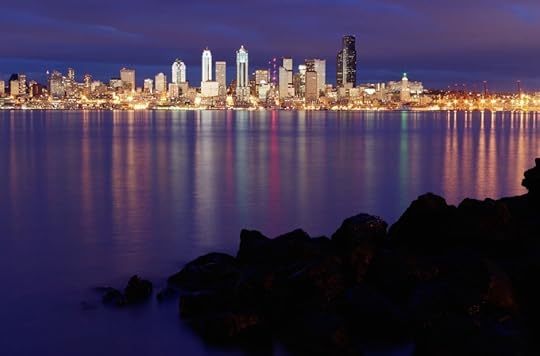
2
Seattle skyline reflecting in Elliot Bay
By contrast to the isolation of the mountains, Seattle and surrounding areas are a hotbed of technology companies, medical research, arts, tourism and trans-Pacific trade, making it a hub of Pacific Northwest culture. In this photo, the Seattle skyline sparkles in Elliot Bay as viewed from West Seattle.
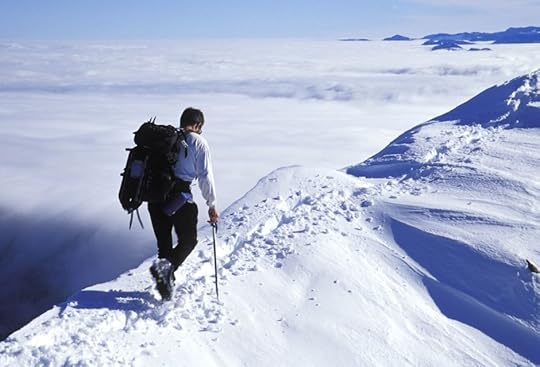
3
Hiking a snowy ridge, Silver Peak, Mt Baker-Snoqualmie National Fores
The Pacific Northwest's geographic diversity and strong environmental-preservation ethic make it a breeding ground for outdoor-recreation innovation and pursuit. Water and mountain sports of nearly all types are no more than a two-hour drive away. For me, sea kayaking, backpacking, climbing, and other various forms of mountain wandering—including teetering on top of snowcapped ridges, feeling like you're literally standing on top of the world—are at the top of my list.
Intermission
186
12 differences between a normal friend and a Spanish friend
by Ana Bulnes
3
8 underground cities and tunnels you can visit
by Michelle Schusterman
19
10 side effects of living in Savannah
by Shannon Gadberry
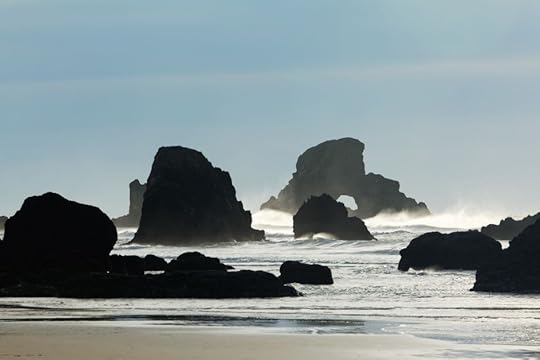
4
Sea stacks on Oregon Coast, Ecola State Park, Oregon, USA
One of the great things about the Oregon and Washington coasts are that they are heavily protected by State and National Parks. In fact, the Oregon Beach Bill grants public access to all beach areas up to the line of vegetation. Thirty six Oregon State Parks, separated by an average of only 10 miles, protect even larger areas, including the beach and sea stacks in this photo at Ecola State Park.

5
Sea stack at sunset, Rialto Beach, Olympic National Park, Washington State, USA
Not only does Olympic National Park protect 73 miles of Washington State coastline, but also manages it as wilderness. This makes for excellent year-round coastal backpacking, especially when it's not raining. These sea stacks were shot at Rialto Beach just after sunset.

6
Driftwood strewn beach in Grandmas Cove
The beaches on the San Juan Islands, however, are more privately owned and have limited public access. However, a few county, state, and national parks do protect some of the best coastal areas. One of my favorites is this driftwood strewn beach at Grandma's Cove, in San Juan Island National Historical Park.

7
Temperate old growth rain forest, Hall of Mosses Trail, Hoh Rain Forest, Olympic National Park
Moving inland just a bit from the coast, moist Pacific winds dump several feet of rain each year onto the world's largest temperate rainforests. Why not take some of it in on the Coast Trail, which runs 382 miles down the full length of the Oregon Coast? In between running into packs of locals who frequent the trail, you'll be totally alone with the forest. Breathe deeply, take in that beautiful, mossy, damp air. Maybe hug a tree, if you're so inclined.

8
Unnamed waterfalls on the Boulder River
The Boulder River Trail, in the foothills of Washington State's central Cascade Mountains, is one of my favorite spring hikes. Waterfalls tumble over mossy cliffs right into the river, which itself tumbles through mossy boulders at the bottom of a mossy canyon. All is green, white, and wet.

9
Oneonta Creek flowing through Oneonta Gorge
Another delightful spring Pacific Northwest destination is the 4,000-foot deep Columbia River Gorge, where the Columbia River penetrates the Cascade Mountain Range. The wet west side of the 80-mile-long Gorge is full of waterfalls, cliffs, and canyons, like Oneonta Canyon pictured here...
Intermission
363
What bartenders actually think of your drink order
by Lisa Millar-Jones
Why spending summer in the Pacific Northwest is the next best thing to traveling abroad
by Nicolle Merrill
84
11 things that will happen when you move to Germany
by Vanessa Van Doren

10
Balsamroot and wind turbines at Windy Flats wind farm, Haystack Butte
...while the dry east side of the Gorge is grassland. Wind turbines climb up on the crest of the Columbia Hills, overlooking a meadow of flowering balsamroot.

11
Field of pink tulips, Mount Vernon, Skagit Valley
The fertile soils of Washington's Skagit River Valley grow the most flowering tulip bulbs in the United States. The Skagit Valley Tulip Festival draws millions of people to view fields of tulips throughout the month of April. I visit every year, arriving before sunrise to photograph the fields before the wind, the crowds, and the traffic get out of hand.

12
Mountain goat in Bailey Range
The Olympic Mountains actually have their origin out in the Pacific Ocean. As the Pacific's oceanic plate slides under the North American continental plate, ocean floor sediments get scraped up and heaped onto the edge of the continental plate, forming hills and mountain ranges called an "accretionary wedge." Here, a mountain goat high up on the Bailey Range overlooks some of the range.

13
Mount Rainier / Spark Plug Lake
In the left photo, our tent is set up below 14,411 foot Mount Rainier on one evening of a 95-mile backpacking trip on the Wonderland Trail, which loops around the mountain. Mount Rainier National Park offers colorful wildflower meadows in August that turn crimson in October and then become ready for snowshoeing or backcountry skiing throughout the winter and spring. In the right photo, the smooth waters of Spark Plug Lake reflect the South Sister, another volcano in the central Oregon Cascade Mountains. This is just one of many surreal views you will find in this downright beautiful part of America. It's not hard to see why we're so proud to call it home.
Stop teaching abroad
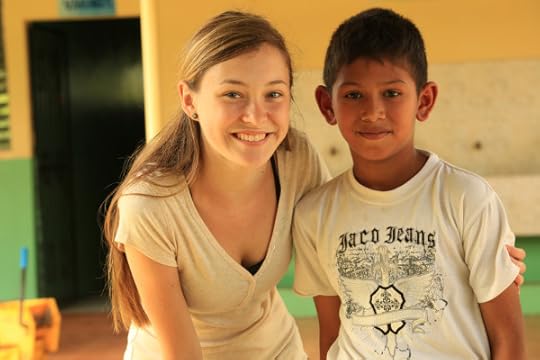
Photo: AFS-USA Intercultural Programs
The idea of teaching abroad is tempting. For people with both a passion for education and travel, combining the two through an ESL job abroad seems like the ideal solution. But below is an argument for why American teachers may be best utilized in our own country more than anywhere else:
1. If you’re passionate about working with children in poverty, there’s no need to travel outside of the States.
A new report by the Southern Education Foundation found that the majority of American public school students — 51% — qualify for free or reduced-price lunches. Overall, one in five US children live in poverty. In 2012, this ranked the United States second to last out of 35 economically developed countries in child poverty rate. Only Romania had a higher child poverty rate than the US.
The United States also has one the highest achievement gaps between high and low income students, as measured by the OECD. The Department of Education has also found that generally, schools with the highest concentration of students in poverty ultimately have lower levels of funding and less qualified teachers.
2. A quarter of American adults read below a fifth grade reading level.
Though our general illiteracy rate (determined by how many people can read a single sentence) is significantly lower than developing countries around the world, when it comes to functional illiteracy — meaning the ability to read basic documents needed for daily tasks — the United States fares terribly.
A study conducted in late April by the US Department of Education and the National Institute of Literacy found that a quarter of adults read below a fifth grade reading level. One in seven people (aka over 40 million) scored at “below basic” level in prose literacy, meaning they could hardly get through reading a job offer or a utility bill. Even worse, these numbers haven’t improved in ten years.
Literacy rates matter in terms of economic prosperity and upward mobility, but several studies also show that literacy rates correlates with a tendency towards crime. For example, in the United States, 85% percent of all juveniles who become a part of the juvenile court system are functionally illiterate, and over 70% of inmates in America’s prisons cannot read above a fourth grade level.

More like this 9 lies people tell themselves before teaching abroad
3. The United States needs ESL teachers too.
Even disregarding the literacy struggles of average English-speaking Americans, there’s also an influx of non-native English speakers in the U.S. who lack the ESL services they need. Children of immigrants represent a fourth of the country’s total child population, almost double the percentage in 1990. In 2012, an estimated 4.4 million students identified as English language learners, 9% of the total student body. In certain states like California, ELL students constituted over a quarter of the total public student population. The average percentage for all large American cities is 17%.
And yet, there’s a shortage of teachers certified to teach students from these backgrounds. A 2002 NPR report found that in North Carolina there were only 900 ESL for the state’s estimate 53,000 children with limited English proficiency, rounding out to about one teacher for every 58 students. A 2009 report by the Florida Department of Education found that 17% of ESL teachers did not have the necessary ESL certification to teach.
4. The United States lacks teachers who share the same backgrounds with their students.
American teachers in foreign countries bring content knowledge and valuable skillsets, yet they won’t necessarily personally relate to their student’s background. By teaching in the United States, American teachers have a personal connection to their students’ educational experience.
This is particularly needed for students of colors: students of color now make up more than half of the public school student population, yet only 18% of public school teachers identify the same way. In some states, the disparities are greater: In California for example, 73% of students are nonwhite, but only about 29% of teachers are. With certain racial groups the disparities are also greater: for example, in Nevada, the student population is 39% Latino yet only 9% of its teachers identify the same way.
Many educators have argued that teachers of color not only serve as significant role models, but also help marginalized students feel more welcome, safe, and “at home” at school. Teach for America acknowledged this in its diversity statement and also argued, “Teacher alumni who share the racial and/or economic backgrounds of our students can be particularly influential in the long-term push for societal change, because of their rich perspective and credibility.”
Teaching in the United States as it looks today is more than a job; it’s a commitment to social justice. American teachers seeking to use their skills not only for education but also social change have plenty of room in the United States to start. 
How NOT to learn a language
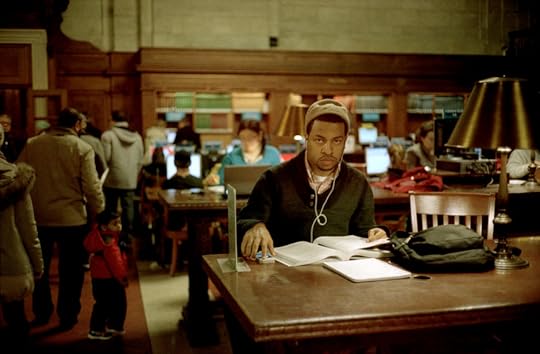
Photo: dtanist
HERE’S a conversation-ending dialogue I’ve become used to having with Germans I’ve just met:
Them: “Du sprichst sehr gut Deutsch. Seit wann wohnst du hier?”
(You speak German very well. How long have you lived here?)
Me: “Fast sieben Jahre.”
(Almost seven years.)
Them: “Oh.”
(I take it all back. Your German is atrocious.)
I swapped London for Berlin to reveal a profound self-truth; that I am ─ truly ─ a useless git. Despite this, on meeting new arrivals to Germany I’m full of advice on how to settle, integrate, and learn the language. They never listen to me of course. Why should they?
Two words: Survivorship bias.
Like shaping a six-pack or making your first million, the genre of polyglotism boasts plenty of success stories from those we assume to be experts. We read and replicate what they say because it worked. For them.
Such attention elevates successful people to a position of faultlessness that doesn’t exist. We all make mistakes, but when we succeed regardless, hindsight too often confuses such quirks of fortune with the keys to success. One guy losing half his body weight on a diet of Subway sandwiches is a great story, but inspired weight watchers ignore the company’s more cumbersome customers at their peril.
Some still reach their destination without taking the most advisable route. Most get lost along the way. That’s why learning from failure is so important.
The heroes of linguistic legend don’t tell you what not to do because they don’t know. I do! I’m so bad at learning my desired language that I’m even missing a class right now to write this article.
Avoid every step that follows and you’ll speak better German than me in no time (whether you want to or not).
1. Be proud
Starting your first second language is a humbling experience. You’ll speak like an infant for quite a while. Since you’re not one, expect to be spoken to as if you’re grossly underachieving. It will be very frustrating at times.
Don’t rest on your mother tongue in order to better articulate your point to somebody who may, as a consequence, understand it less. You will only have to speak more slowly and omit all interesting words as your fluency suffers. Finally forgetting how to say anything at all is pretty much the worst-case scenario on your language-learning journey.
2. Just pick it up!
I spent three summers working on an English-immersion camp in Germany. It was mercifully less heavy-handed than one might expect from a German camp, but it worked. At least for some kids.
For some kids it didn’t. For some it worked better the second time. Or third. Some just ended up resenting their parents.
It completely depends on your disposition and the language itself. Different languages demand different areas of focus and not everybody learns all of those best the same way. My own experience with simply “picking up” a language created something new, unique, and comprehensible only to me. I spent my first months of German school unlearning it.
3. Dive in blind
Language is a minefield. For every noun I learned in my first two and a half years, I considered the gender-specific article to be excess baggage. I didn’t remember “the” providing much of a challenge in English so figured I could learn the seemingly more important stuff first and come back to it.
Now I have to relearn all of those nouns! Yaaaayyyyyyyy…!
4. Make excuses
“Everyone speaks such good English here that it’s just too easy not to speak Ger…”
Shut up, younger me! Excuses remain valid for only as long as you’re trying to work around them.
To my credit I realised this after only about the thousandth time. I know people who have been here longer than me, speak far worse German, and are still doing it. The problem is so deeply ingrained that others — even Germans — continue to make excuses for me when I abase my ability.
Learning a language is hard. Other people’s politeness is not the reason you’re doing it so badly.
5. Go word-for-word
Overcome your dictionary dependence. Each language has its own way of saying the things you don’t realise are unique to yours. Grammar and cultural references can make direct translations redundant.
You can’t really speak a language until you can think in it. Learning the words for things is the easy part. For proof, simply list all the synonyms for “drunk” you know. See?
6. Take plenty of time off
Winding down is important. You can’t possibly forget that much on a single day off. Or two. And another and another…
Lose a level.
How have you made a mess of language learning? Do share! 
What country is your soul from?
Mindhack to prevent travel crime
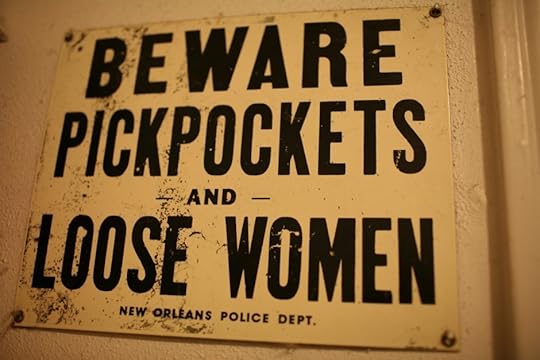
Photo courtesy of Scott Beale/Laughing Squid
I HAVE BEEN ROBBED, SCAMMED, or pickpocketed at least eight times while traveling abroad. And before you immediately click out of this tab thinking, “Then you aren’t a very credible source now, are you?” I should mention that all eight robbings, scammings, and pickpocketings happened from the time I started traveling internationally at age 16 until I was 22. I’m 28 now, and I haven’t had the slightest problem since — and this has not been for a lack of traveling.
The reason for the sudden change was a simple change of perspective on getting robbed, scammed, swindled, conned, duped, or defrauded. When I first started traveling, I viewed being parted with my money or belongings as something that was happening to me. It was something that mean, unscrupulous, or greedy people were doing — I was just the victim.
After the eighth time, as I called home and asked my dad to wire my $900 so I could eat until the bank was able to send my credit card replacement overseas, I realized: I am the common factor here. This is my fault. And by thinking of my many robbings as my own fault, I quickly made sure it would never happen again.
Taking responsibility vs. Victim blaming
Obviously, this is a slippery slope. By saying that I am the person who caused these robbings, I was effectively putting the responsibility for crimes committed against me on my own shoulders. This is not a good thing to do, particularly when it comes to theft and violent crime: the legal and cultural blame should always be shifted to the perpetrator and never to the victim.
But from a personal standpoint, I had to admit that I did not have the power to shame an entire world full of criminals. Massive issues like global poverty, economic injustice, and cultural alienation are all at play when it comes to crime, and if I wanted to stop being robbed, I couldn’t do very much to fix those issues. I wanted to travel. There were going to be criminals in many of the places I wanted to travel to. I could not do anything to stop that.
So the only other option was to accept the responsibility myself. I had to admit that my six-foot-three, 230 pound frame made me stand out, and that my aw-shucks, pass-the-cornpone Midwestern face made me seem like a pretty great target for would-be criminals. Once they commit the crime, it’s on their shoulders. But by acknowledging my role, I could limit my risk. Basically, if I could lie to myself ahead of time and pretend that their crime was my fault, I would likely be able to prevent future crimes from happening.
Limiting Risk
The first thing you’re able to do when you decide that getting robbed is your own fault is to start to identify why it’s your fault. It means figuring out what the risky behaviors are and limiting them.
Before the change, for example, I never kept my hands in my pockets in crowds. If someone brushed past me, I never shifted my weight so I could feel the contents of my pockets resting against my leg. I would conspicuously flash my nice camera in less-than-reputable places, and I wouldn’t take care to walk home at night with a friend.
Once I took responsibility, I became instantly more aware of my surroundings. I tried to rely on gut feelings to get me in and out of situations I didn’t like, and I began educating myself ahead of time on what scams were common in my destination, what to look out for, and which neighborhoods and areas to avoid or to at least be very cautious in.
You can definitely be too cautious
Of course, there’s such thing as being overcautious. If you didn’t want to expose yourself to any risk, you would just stay at home. But risk management is important when traveling abroad, especially since a crime — particularly a violent one — can ruin a trip. And if something does happen, it’s important not to blame yourself afterward: sure, there may have been things you could have done different, but those are the things that you learn from.
My experience in getting robbed — and in knowing other people who have gotten robbed — is that the robbings/muggings/scammings are usually pretty predictable. They got into an unmarked cab. They went to a bad part of town. They said something stupid to the wrong person. But that doesn’t mean that bad things can’t happen when you’ve done everything you can do to prevent them. In the end, it all comes down to chance. You were unlucky. Learn from it and move on. 
Matador Network's Blog
- Matador Network's profile
- 6 followers



